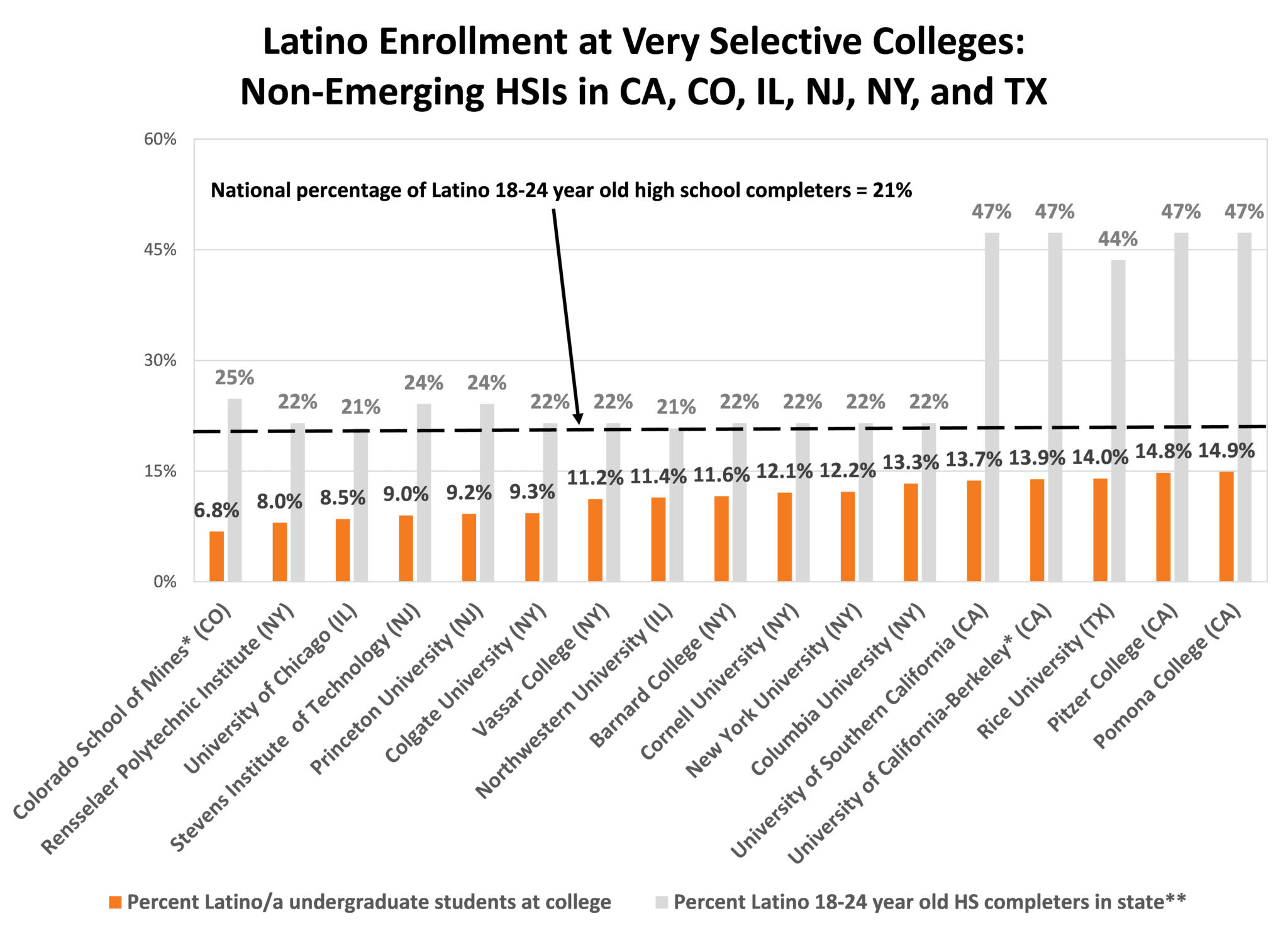13 Questions for Colleges and Universities Should Ask Themselves When Recruiting Students of Color
Increasing Latino enrollment at elite colleges is particularly important for a few reasons. First, America’s top colleges disproportionately produce those who have the most influence in business, politics, and other aspects of society. Second, elite institutions typically have more resources than others and are rich with networking opportunities that impact economic outcomes after graduation. Third, since these institutions will churn out many of our future leaders, we want those leaders to be racially and ethnically diverse and have educational experiences that expose them to people who come from different backgrounds and have different experiences and perspectives.
Highly selective colleges and universities should take a look at why they enroll so few Latino students. Key questions for leadership at these schools should ask include:
- What are the benefits of diversity for our college and how does it help us fulfil our school’s educational mission?
- What is our responsibility in promoting racial, ethnic, and socio-economic diversity in higher education and beyond?
- What have we done to prioritize ways to better serve Latino students in our evaluation, planning, and allocation of resources?
- How well have we targeted recruitment and outreach to encourage applications and interest in enrollment among Latino students at both high schools and community colleges?
- To what extent have we reduced or eliminated consideration of admissions criteria that advantage White and high-income students, such as legacy status, ability to pay full price, and recruitment for varsity sports teams with little racial and ethnic diversity?
- To what extent have we made admissions reviews more holistic to emphasize factors beyond traditional criteria? How much weight is placed on traditional factors such as grades in college prep courses, grades overall, strength of curriculum, and admissions test scores compared with non-traditional factors such as first generation status, life experience, bilingual fluency, and barriers overcome by the student?
- How well have we tailored admissions processes to take into consideration the achievement of prospective students in light of challenges they faced in elementary and secondary school?
- How well have we developed financial aid practices and supports that encourage Latinos to choose to enroll at our institution?
- How have we made the financial process easier for first-generation college goers and foreign-born Americans?
- To what extent have we created opportunities to engage and educate parents in English and Spanish around admissions, financial aid and student engagement and support?
- How much progress have we made in matriculating and retaining Latino students through initiatives such as summer bridge programs?
- How have we made campus climate and culture more inclusive of Latino students?
- To what extent do Latino students see people like themselves represented among the teaching faculty and campus leadership?
Recruiting, admissions, financial aid, student supports (e.g., mentoring and career advice), and campus climate likely all play a role in how well top colleges attract and serve Latino students. With such little representation of Latinos at top colleges, it is clear that college presidents and leaders need to assess their schools on the above questions and much more. Major changes will be needed so that graduating classes our top colleges better reflect the increasing diversity of our nation.
For more information and for additional resources, you can check out A Look at Latino Student Success.









